El Paso International Airport (ELP)
El Paso International Airport (ELP) is a medium sized, multi-use airport located north and east of the city of El Paso, Texas. Pilots inbound for ELP should note that the airport is located only 3.5 miles north of the US/Mexico border. Biggs Army Airfield (BIF) is less than two miles north of ELP. This warrants additional awareness because RWY 4/22 at BIF can be mistaken for RWY 4/22 at ELP. View a printable Pilot Handbook of the ELP information found on this Web page.
Know Before You Go
The traffic mix at ELP consists of scheduled air carriers (domestic/international), business, general, transient, and military aircraft. Flight schools from nearby airports frequent ELP for practice at a towered airport. This diverse mix of traffic and operations traffic mix makes ELP challenging.
The airport consists of two parallel RWYs with staggered thresholds designated RWY 8L/26R and RWY 8R/26L. Additionally, there is a larger RWY 4/22. A complex TWY system provides access to all terminals, ramps, and services located primarily on the south side of the airport.
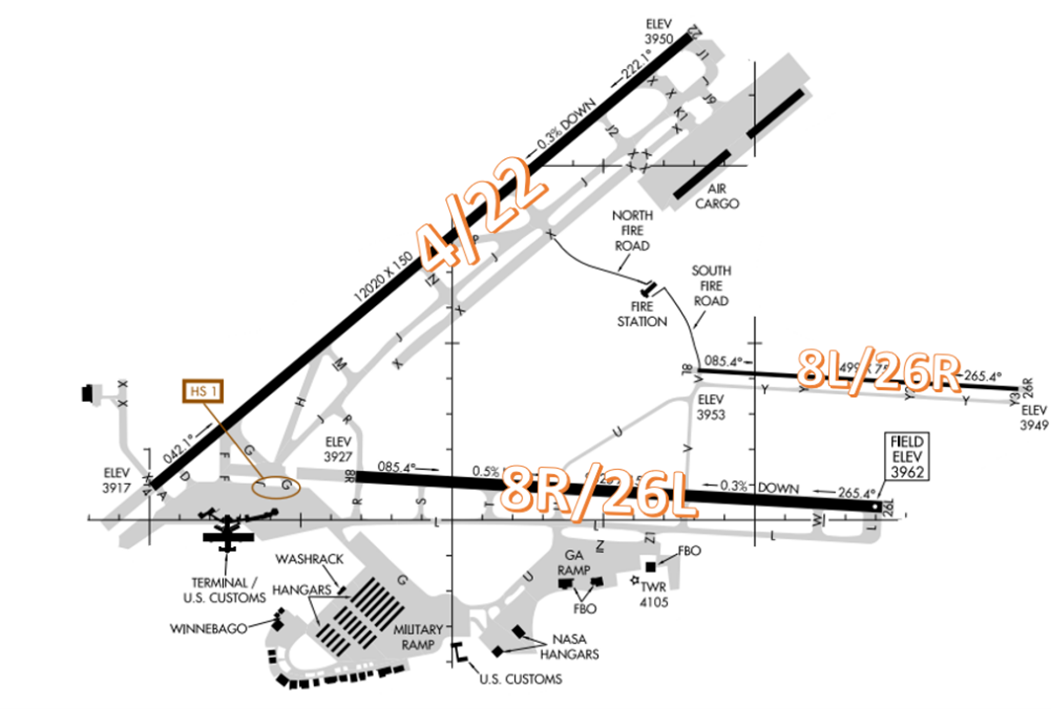
The airspace at ELP is Class C.
El Paso Class C Airspace borders the Contiguous U.S. Air Defense Identification Zone (ADIZ) This is an area of airspace over land or water, in which the ready identification, location, and control of all aircraft (except Department of Defense and law enforcement aircraft) is required in the interest of national security.
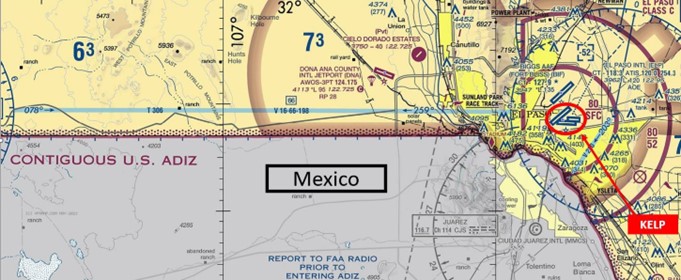
ELP Tower Hours of Operation - Continuous
Administrative Office Open 0730L to 1600L – M through F
Business Phone 915-774-9410
Below find various ELP-specific information and things to be aware of, as well as general information to inform your preflight planning. This will be reviewed quarterly and updated as needed. This information is to supplement the From the Flight Deck Videos that are produced by the FAA Runway Safety Group. Here you will also find information provided by the local air traffic controllers at the airport where you intend to fly. The information is subject to change. Not for navigation or legal* pre-flight action. Always refer to official pre-flight materials such as, but not limited to, NOTAMs, airport diagrams, VFR charts and airport construction notices for the latest airport-specific details.
Hot Spots
- RWY 8R approach considered active, do not proceed on or cross without ATC clearance especially when taxiing to RWY 4 via the terminal ramp.

Wrong Surface Intersection Takeoffs
- Risk exists where pilots will turn in the wrong direction during Intersection Takeoffs.
- Always check the magnetic compass / Horizontal Situation Indicator (HSI) to confirm departure in the proper direction. (See illustration below.)

Wrong Surface Taxiway Takeoffs
- The risk of landing or taking off on a TWY exists.
- There are full-length parallel TWYs at ELP.
- Runway Markings are White.
- Surfaces not used for Takeoff/Landing like Taxiway Markings, Chevrons, Runway Shoulder, and Runway Turn-on Markings, etc., are Yellow.

Wrong Surface Landings - See Arrival Alert Notices.
- A Wrong Surface Landing risk exists due to parallel RWYs with staggered thresholds.
- Pilots approaching from the east/southeast on a right downwind for RWY 8R should be aware that RWY 4 comes into view on base leg. This could cause pilots to roll out for that RWY instead of RWY 8R as assigned. (See illustration below.)
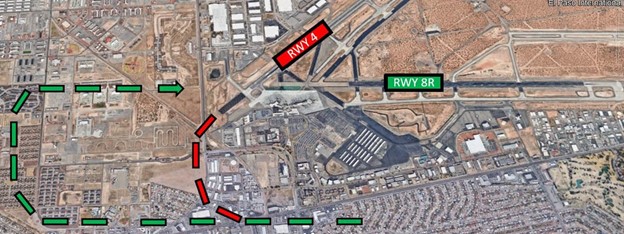
Wrong Airport Landings
- A Wrong Airport Landing risk exist between BIF and ELP, especially when landing on RWY 4 or RWY 22 because both airports are only located only 2NM apart with similar RWY numbers.
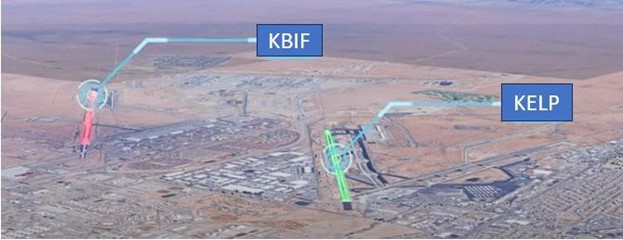
Surface Risk – Movement Area Cautions
- Hot Spot (HS) 1 is a large complex area of concrete where several TWYs and an extended RWY centerline come together. Some pilots have been confused especially when taxiing from the general aviation (GA) ramp for takeoff on either RWY 4 or RWY 8R.
- Additionally, general aviation aircraft taxiing to RWY 4 from the east ramp may encounter congestion and confusion in this area.
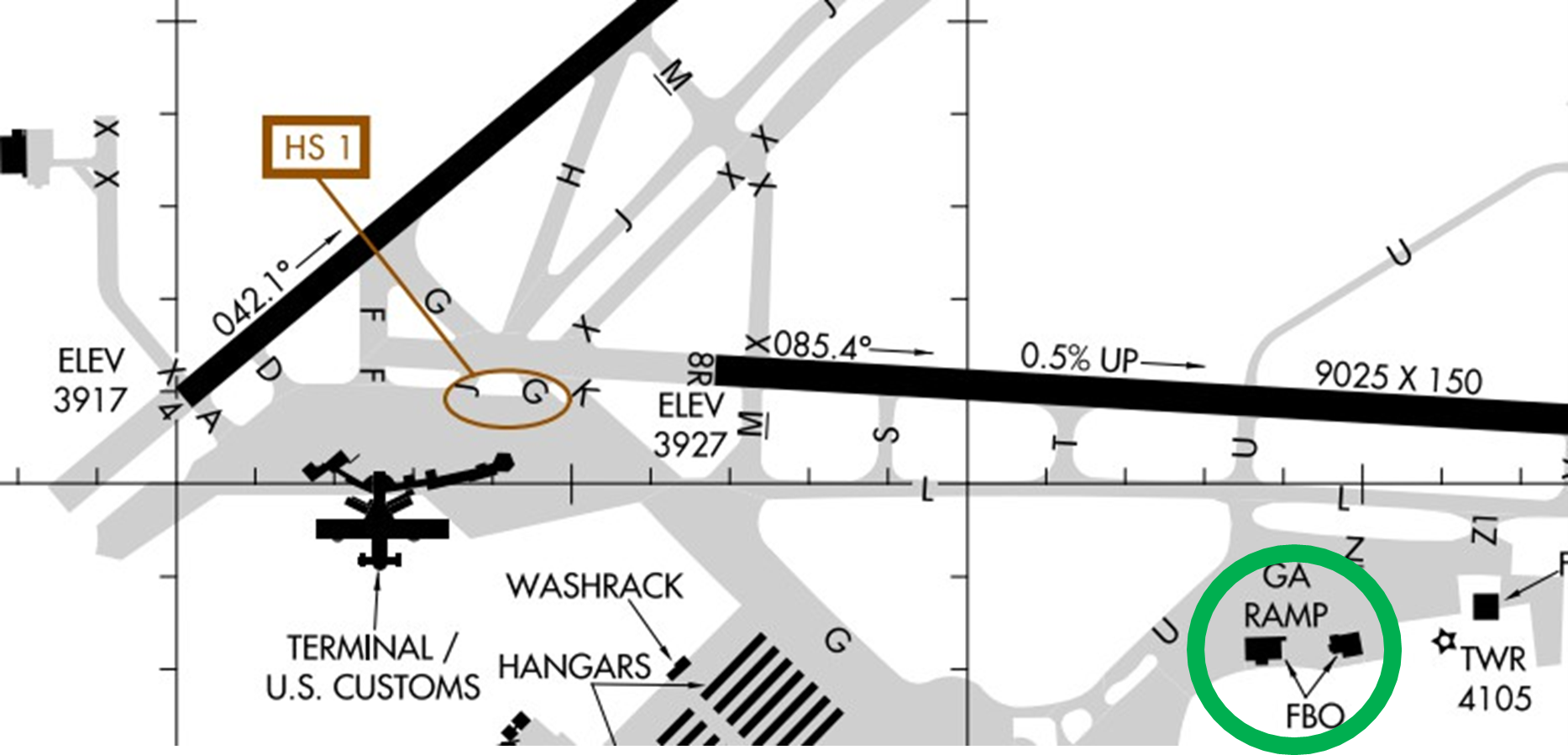
- There is a large, non-movement area surrounding the terminal where air-carrier aircraft push back from the gates. Pilots should use caution if rolling out on the RWY 26L extended runoff area.
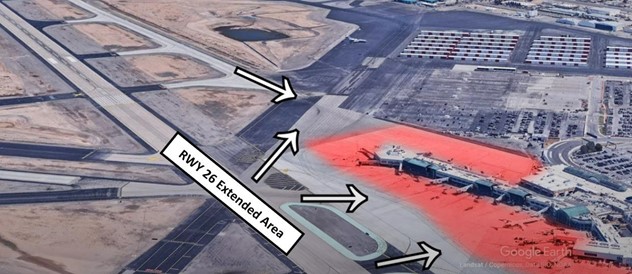
Additional Cautions
The approach ends of RWY 4/22 are not visible from the TWR. Transmit and receive radio issues sometimes occur at these locations.
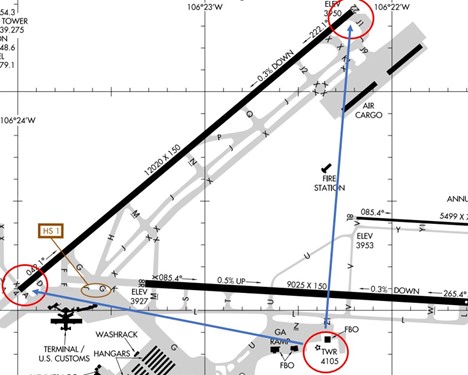
Pilots should review the Letter to Airmen (LTA-ELP-20) in NOTAMS for detailed information on additional “Areas Not Visible or Not Controlled by the Control Tower”.
Mountainous Terrain (See Sectional Chart)
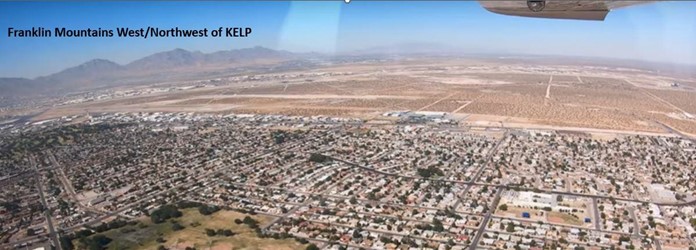
General
- The RWY 8R Approach area is easily confused as several TWY’s converge onto the Terminal Ramp area. If you have any questions regarding taxi instructions, please verify with ATC prior to entering the RWY 8R approach.
- It is important to note that the RWY 8R approach area serves as an overrun area for aircraft landing RWY 26L. If possible, you should avoid stopping in the RWY 8R approach area as it may initiate Go-Around instructions for aircraft on approach to the RWY.
Traffic Patterns
- Traffic pattern altitude for small, fixed wing traffic is 5000’ MSL.
- Traffic Pattern altitude for large aircraft is 5500’ MSL.
- Traffic Pattern altitude for jets is 6000’ MSL.
- Verify traffic pattern direction with ATC as there may be multiple aircraft in the pattern.
Takeoff/Departure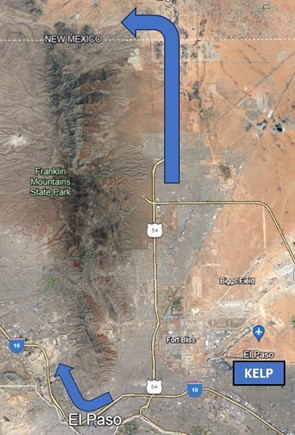
- ELP has two informal VFR departure areas known as the “Downtown” transition or the “Gap” Transition that are utilized to gain altitude above the Franklin mountains.
- The Downtown transition is a VFR departure to the Southwest over the downtown area of EL Paso. Once you feel confident in your ability to climb above obstructions you may continue westbound unless otherwise instructed by ATC.
- The Gap transition refers to the Anthony Gap which is the northernmost part of the Franklin mountains. Aircraft on the Gap transition should fly North westbound until they clear obstructions and then may continue westbound unless otherwise instructed by ATC.
Arrival/Landing
- When inbound from the west, over downtown El Paso, contact Approach Control prior to the Class C Airspace for departure advisories.
- When inbound from the east, on the right downwind to runway 08R, use caution when turning base to Runway 08R, potential for WSL to RWY 04.
- Pilots should review the Letter to Airmen (ELP-LTA-21) in NOTAMS for detailed information on “VFR Aircraft Conducting Practice Approaches at El Paso International Airport (KELP)”.
Special Traffic (Military / Commercial / Helicopter, etc.)
- The Southeast Practice Area is an area southeast of El Paso Class C airspace, east of the Mexican border, south of the ELP VORTAC 090 Radial and within approximately 30NM from the ELP VORTAC
- Numerous government, military and medivac helicopters operate along the border west and east of El Paso.
- Pilots should review the Letter to Airmen (ELP-LTA-22) in NOTAMS for detailed information on “El Paso Class C Airspace and Southeast Practice Area Operations”.
Weather
- High winds are common during certain seasons and can gust up to 50-60 MPH, causing the dust to reduce visibility to zero. Additionally, during the Monsoon Season, rapidly building thunderstorms and high winds can develop causing visibility to diminish to zero.
